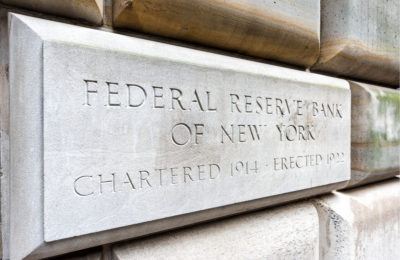Unconventional monetary policy: not all assets are created equal
In a recent post, I considered whether the Fed’s massive expansion of the monetary base is unconventional. It is certainly unprecedented. Nonetheless, I concluded that it was business as usual: the Fed expanded the base as it always has, by purchasing assets. Today, I will explore one of the ways in which recent Fed policy has been unconventional. In particular, I will show that the types of assets the Fed has purchased are very different from assets purchased in the past.
The Federal Reserve Bank of Cleveland offers a very useful chart. It shows assets held by the Fed since January 2007. Recall, from the earlier post, that the monetary base expanded significantly starting around September 2008. This was unprecedented but not unconventional. Now we can see what assets were being purchased. One thing is for sure: the Fed’s balance sheet ain’t what it used to be. Prior to 2008, the Fed limited its asset holdings almost exclusively to traditional securities (e.g., short-term Treasuries). Lending to financial institutions was minor and many categories of assets (e.g., long-term Treasuries, liquidity to key credit markets, federal agency debt) were not held at all. From January to September 2008, the Fed reduced purchases of traditional securities in order to lend to financial institutions without significantly increasing the monetary base. In July, it also stepped up its lending to key credit markets, but not by a lot. Note that the Fed altered the composition of its balance sheet while leaving the size largely unchanged. The value of its assets was on par with traditional Fed practice, but the riskiness of the assets had almost certainly increased. In September 2008, the Fed embarked on a massive lending program to financial institutions. Such lending, which totaled around $550.1 billion in early September, increased to $1,571.2 billion by mid November. Meanwhile, lending to key credit markets increased from $29.2 billion to $362.4 billion. Most of these loans have since been paid off.
The major changes to the Fed’s balance sheet that are still with us today concern federal agency debt and long-term Treasuries. The Fed began purchasing mortgage-backed securities from Fannie Mae and Freddie Mac in September 2008. Today, the Fed holds roughly $1,763.2 billion worth of these so-called troubled assets. In March 2009, the Fed began purchasing long-term Treasuries. Today, the Fed holds roughly $2,089.3 billion worth of these long-term assets. More than 85% of the Fed’s asset holdings today fall into one of these two categories. That’s especially interesting considering that these are assets the Fed did not traditionally hold.
We can discuss the reasons and debate the merits of the change in the composition of the Fed’s balance sheet, but it seems clear that the Fed is doing something today that it has never really done before. It is purchasing assets that it has not purchased in the past. In this sense, we can agree that monetary policy has been unconventional.









